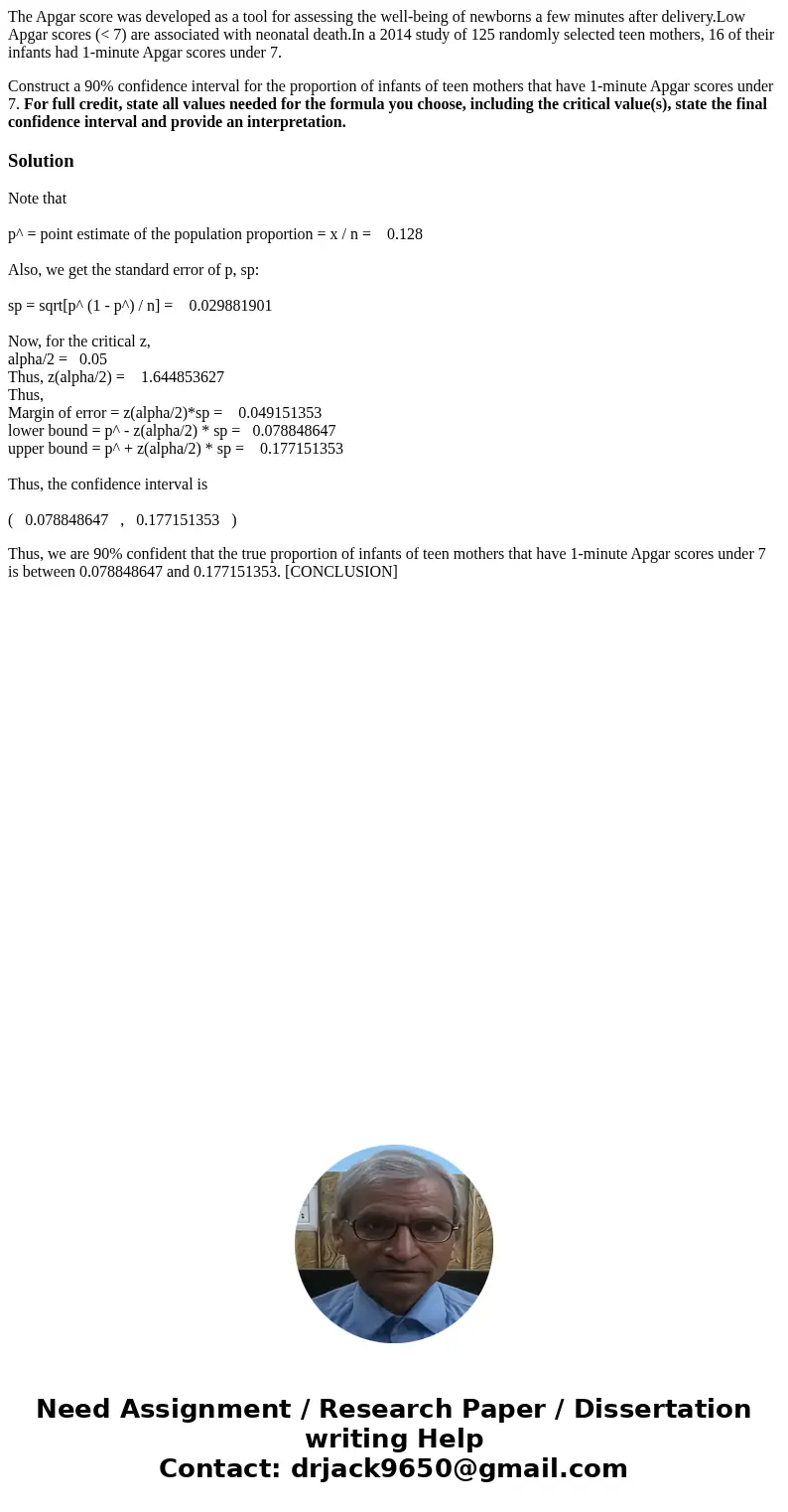The Apgar score was developed as a tool for assessing the we
The Apgar score was developed as a tool for assessing the well-being of newborns a few minutes after delivery.Low Apgar scores (< 7) are associated with neonatal death.In a 2014 study of 125 randomly selected teen mothers, 16 of their infants had 1-minute Apgar scores under 7.
Construct a 90% confidence interval for the proportion of infants of teen mothers that have 1-minute Apgar scores under 7. For full credit, state all values needed for the formula you choose, including the critical value(s), state the final confidence interval and provide an interpretation.
Solution
Note that
p^ = point estimate of the population proportion = x / n = 0.128
Also, we get the standard error of p, sp:
sp = sqrt[p^ (1 - p^) / n] = 0.029881901
Now, for the critical z,
alpha/2 = 0.05
Thus, z(alpha/2) = 1.644853627
Thus,
Margin of error = z(alpha/2)*sp = 0.049151353
lower bound = p^ - z(alpha/2) * sp = 0.078848647
upper bound = p^ + z(alpha/2) * sp = 0.177151353
Thus, the confidence interval is
( 0.078848647 , 0.177151353 )
Thus, we are 90% confident that the true proportion of infants of teen mothers that have 1-minute Apgar scores under 7 is between 0.078848647 and 0.177151353. [CONCLUSION]

 Homework Sourse
Homework Sourse